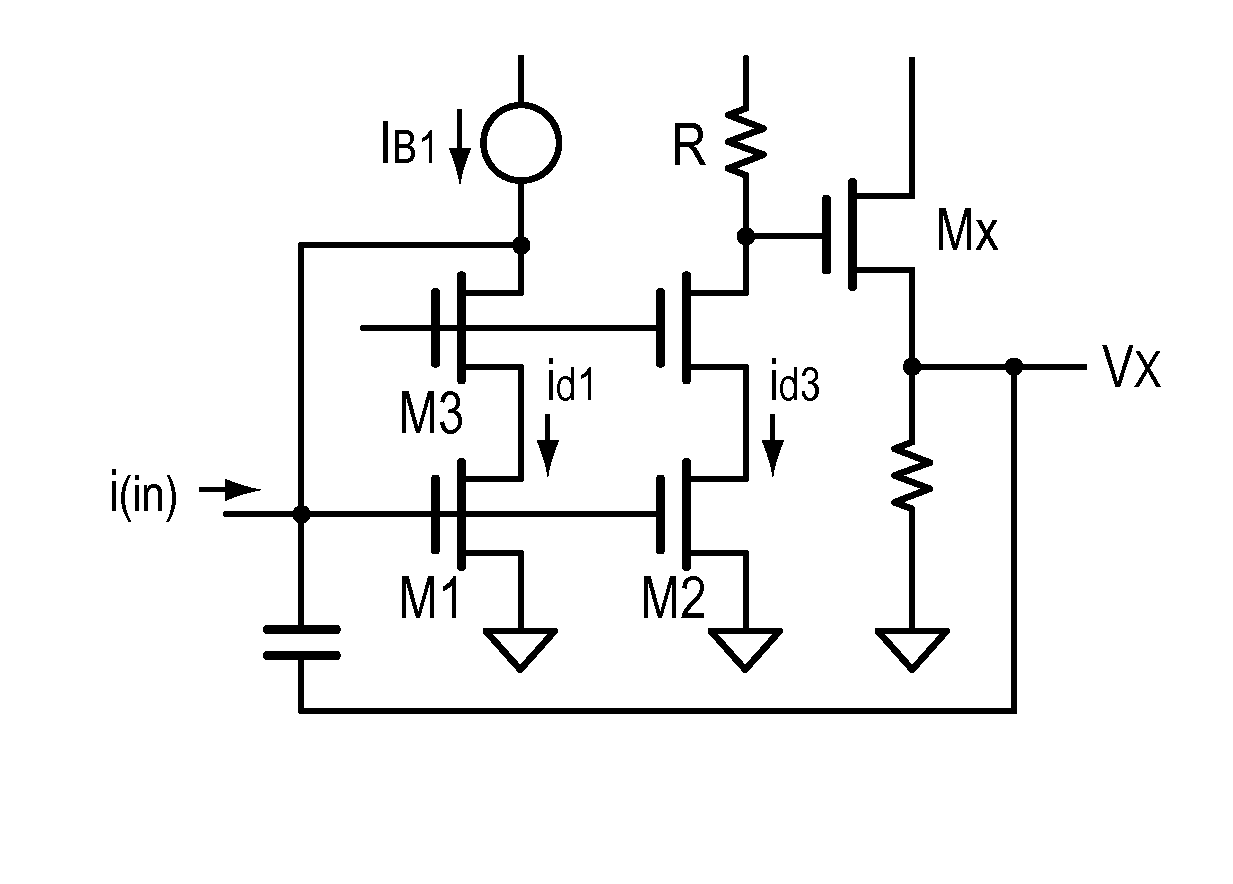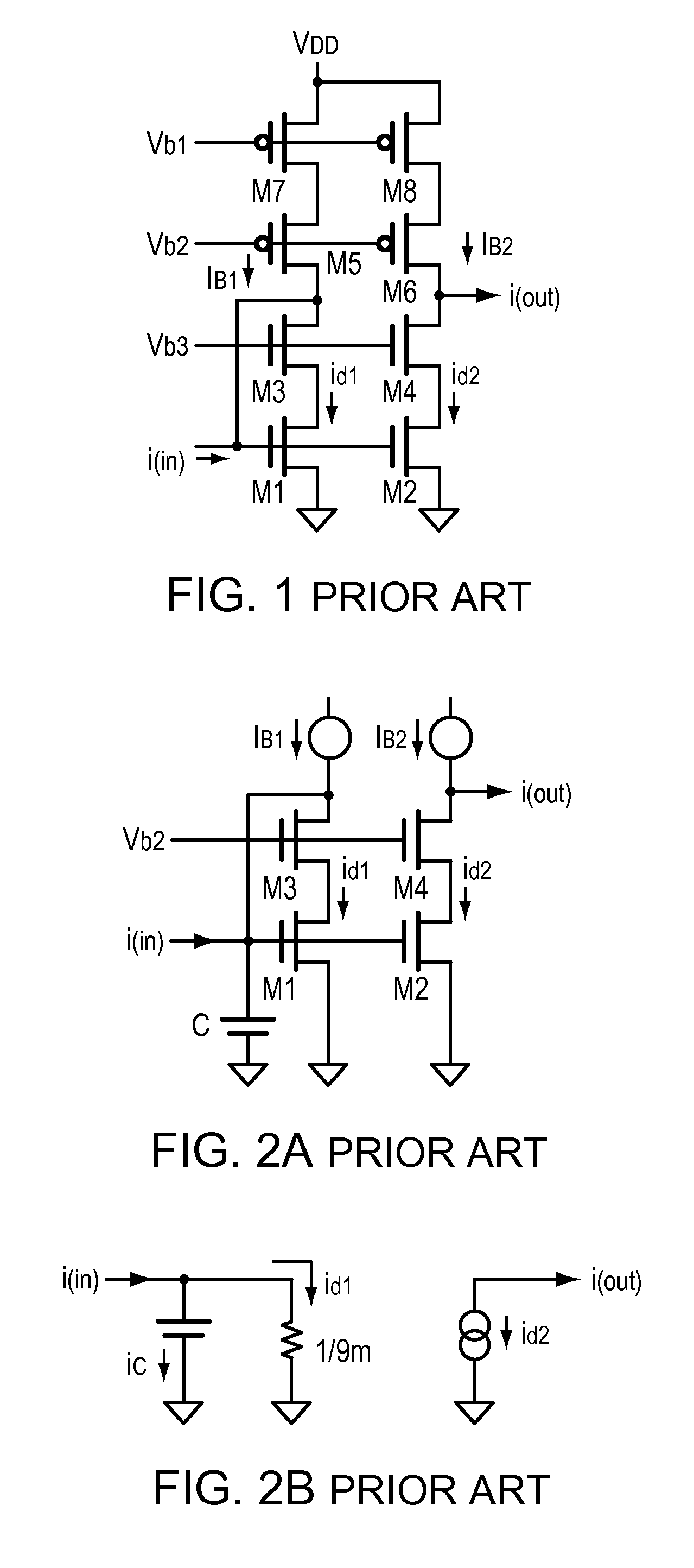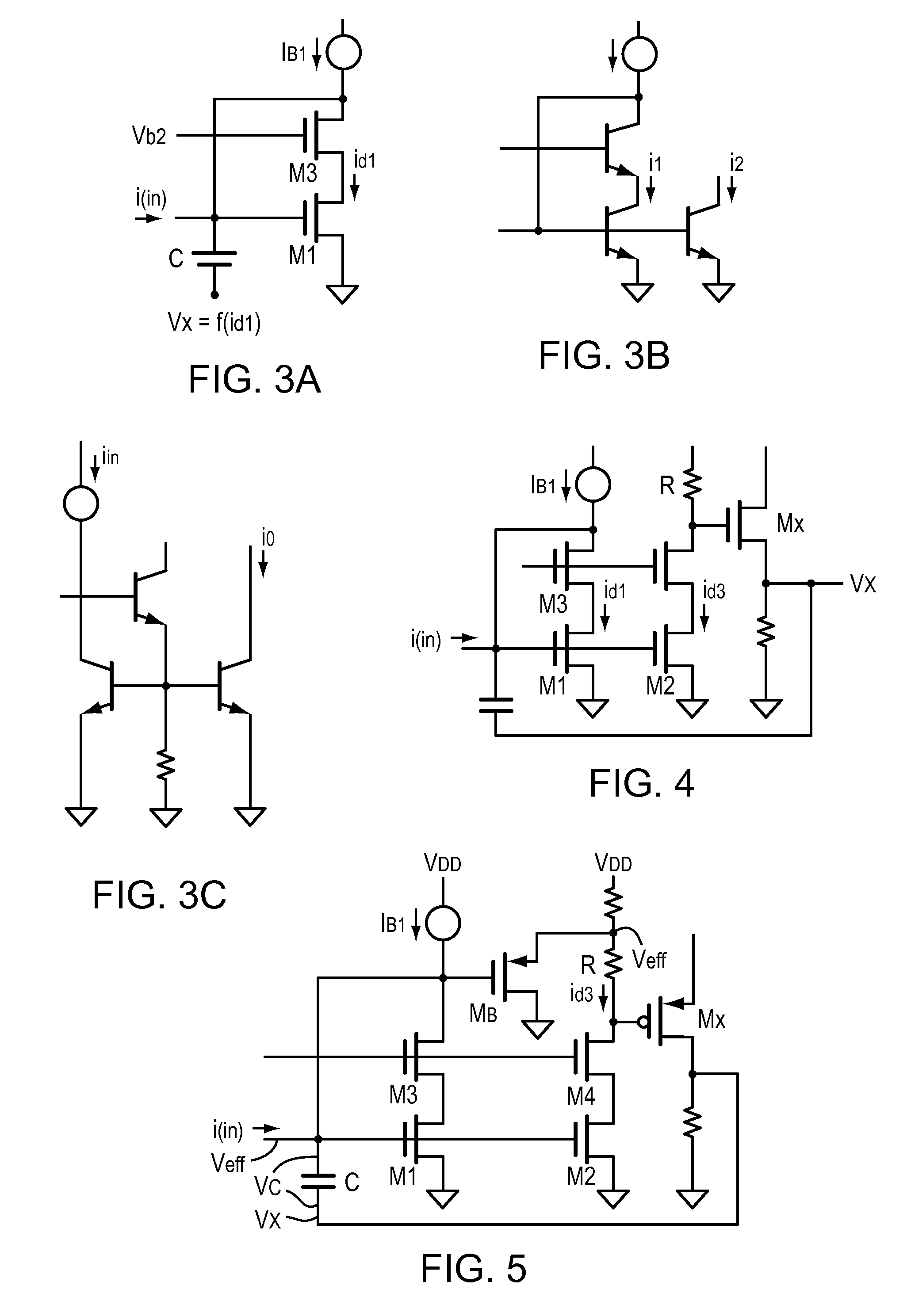Linearization technique for current mode filters
a current mode filter and linearization technology, applied in pulse techniques, computer operations for integration/differentiation, instruments, etc., can solve the problems of active devices introducing distortion into the signal that travels through active devices, and achieve the effect of improving the linear respons
- Summary
- Abstract
- Description
- Claims
- Application Information
AI Technical Summary
Benefits of technology
Problems solved by technology
Method used
Image
Examples
Embodiment Construction
[0041]FIG. 3A is a simplified schematic of a preferred embodiment illustrating the present invention. Here, a voltage Vx is developed from id1 and applied to the end of the capacitor. The implementation is designed so that the voltage across the capacitor Vc=Veff−Vx, and circuit design that produces—Vx which acts to compensate for the non-linear terms found in Veff. FIG. 3B represents a diode connected bipolar cascade set of transistors and a current mirror, where i2 is a mirror of i1. In FIG. 3C the transistor T2 helps to reduce errors attributable to base currents, as is known to those skilled in the art. MOS circuits are used for the following discussion, but bipolar or hybrids thereof may be used to advantage.
[0042]FIG. 4 is a preferred embodiment circuit to produce Vx. Here the current mirror is designed for id3=id1, and the voltage drop across R is the linear function (R)id1. The source follower Mx drives the linear signal Vx back to the capacitor C.
[0043]In this instance the ...
PUM
 Login to View More
Login to View More Abstract
Description
Claims
Application Information
 Login to View More
Login to View More - R&D
- Intellectual Property
- Life Sciences
- Materials
- Tech Scout
- Unparalleled Data Quality
- Higher Quality Content
- 60% Fewer Hallucinations
Browse by: Latest US Patents, China's latest patents, Technical Efficacy Thesaurus, Application Domain, Technology Topic, Popular Technical Reports.
© 2025 PatSnap. All rights reserved.Legal|Privacy policy|Modern Slavery Act Transparency Statement|Sitemap|About US| Contact US: help@patsnap.com



